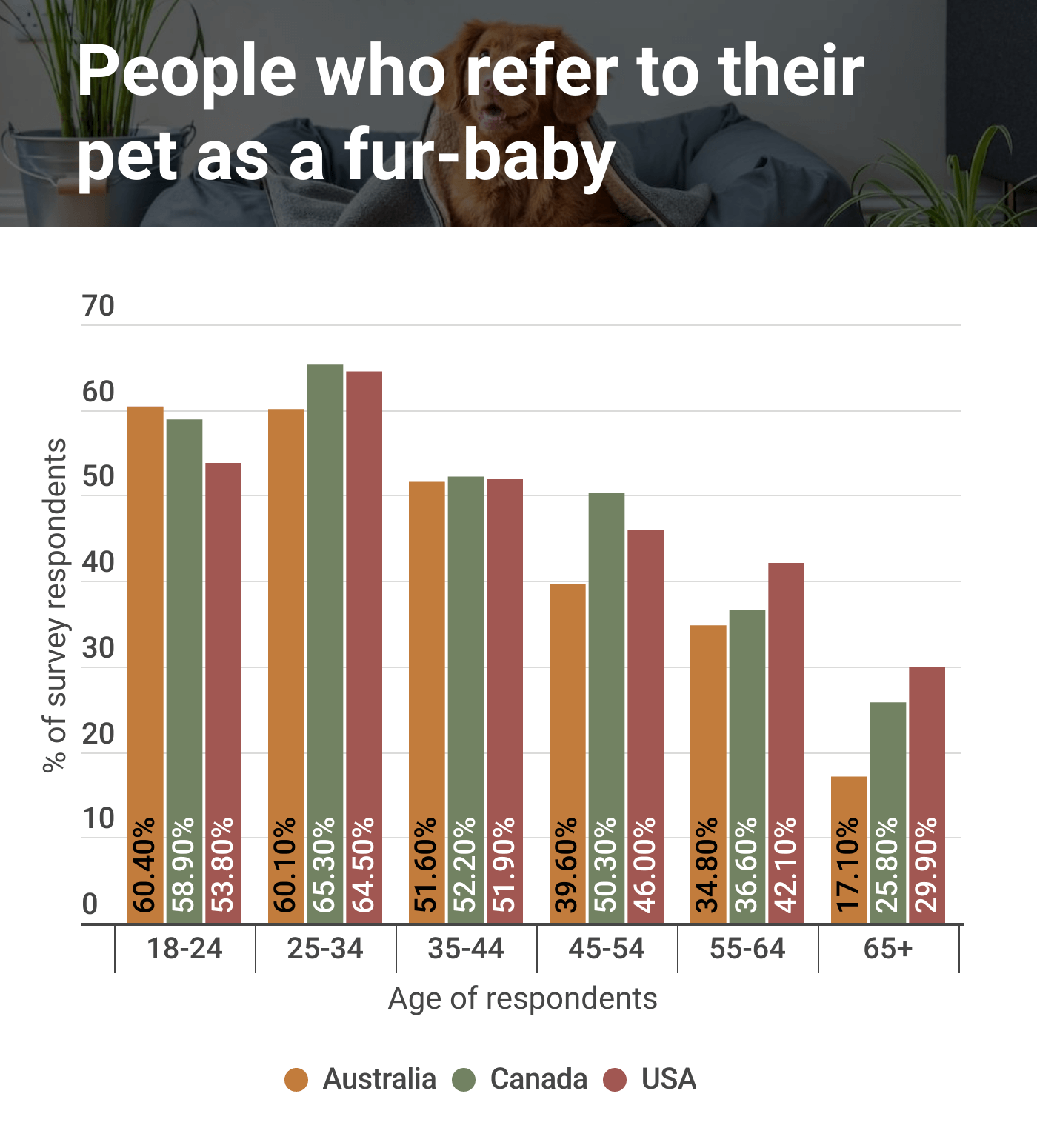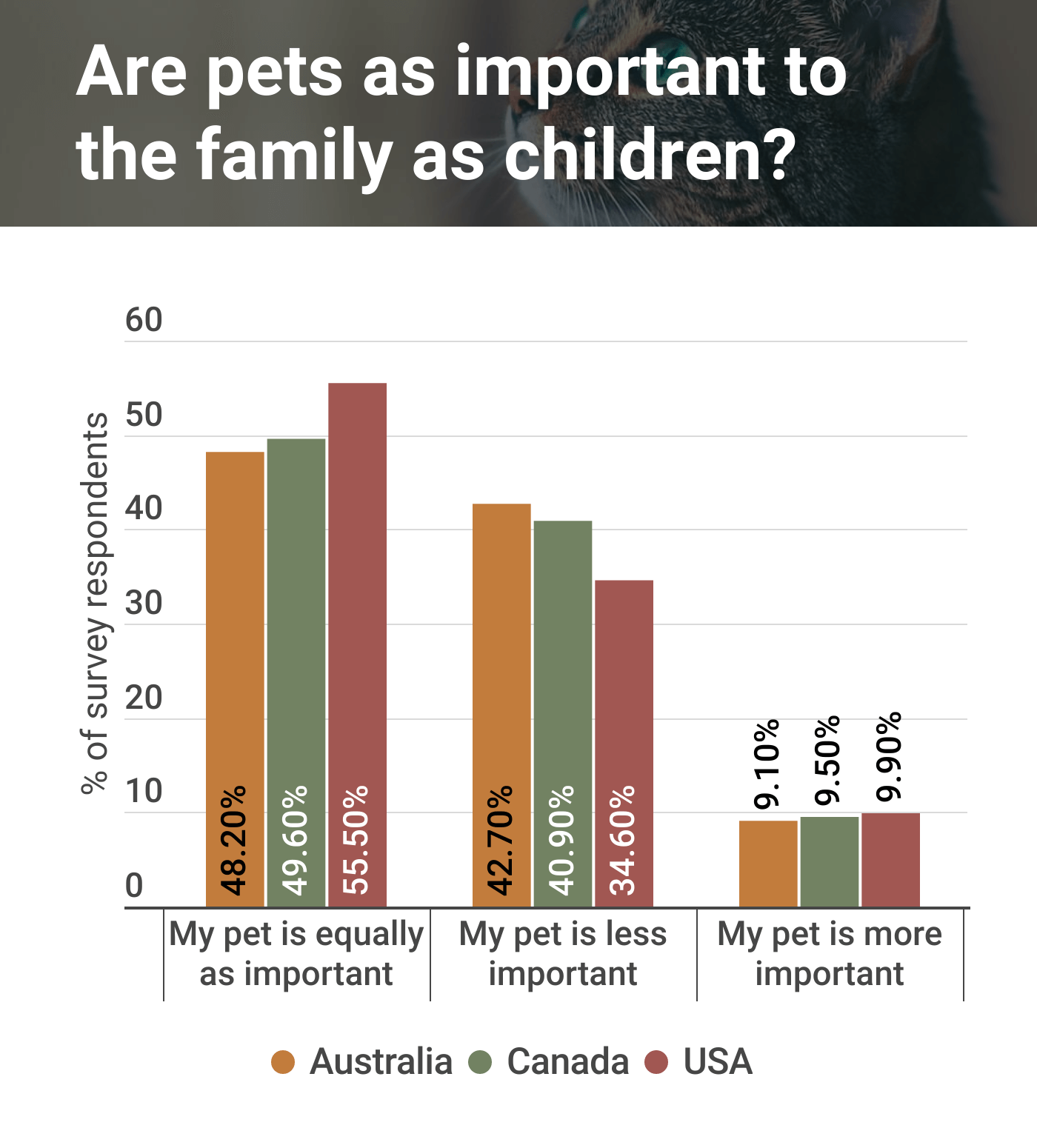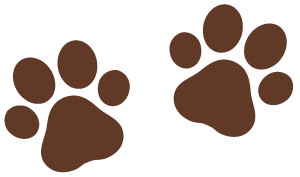The Burrow
Pets are often considered ‘part of the family’. Cats, dogs and other animals might not be human, but many people treat them almost as if they are.
As families choose to have less kids, pets are increasingly becoming more than companion animals, and closer to a (typically) four-legged, furry surrogate child. This has given rise to the term ‘fur-baby’.
Just how important are our fur-babies?
To find out, the pet insurance experts at Compare the Market surveyed over 3,000 Australian, Canadian and American adults to find out how many people are viewing their pets as fur-babies, and just how much we value furry friends.
Fur-babies is a popular term for people who own (or have owned) pets, and this was true across the board for the three nations surveyed. Canadians were the most likely to refer to their pets as fur-babies at 48.9%, followed by Americans at 47.6%, while Australians were the least likely at 42.1%.
Interestingly, when breaking the data down by gender, female pet owners were more likely to use the term fur-baby, whereas male pet owners were more likely not to use the term.
The biggest difference was in Canada, where 59.3% of female pet owners use the term, compared to 37.5% of male pet owners. The smallest difference was in the USA, where 53.1% of female pet owners and 41.6% of male pet owners refer to their pets as fur-babies. The table below shows the gendered split for all three countries.
Another clear trend in all countries is that younger generations are much more likely to call their pets their fur-babies than older generations.
In Australia and the USA, the chance of using the endearing term dropped below 50% from those aged 45+, while in Canada, it dropped below 50% from 55+, as shown in the graph below

The survey also asked survey respondents how important their pets were in comparison to the respondents’ own children and loved ones. The most common answer from all three countries was “my pet is equally as important as my children or other loved ones”.
Roughly half of the respondents in each country selected this option as the statement they most agreed with. The biggest proportion was in the USA, where 55.5% of surveyed pet owners said their companions were equally as important as their own children and other loved ones. In Canada it was 49.6% and in Australia it was 48.2%.
Interestingly, almost 10% of people in each country agreed with the statement “my pet means more to me than my own children or other loved ones”.

Not only are female pet owners more likely than men to call their pets fur-babies, but women are also more likely than men to say that their pets are equally as important as their children or loved ones. Sixty per cent of American women, 56.4% of Australian women and 57.8% of Canadian women said their pets were equally important, compared to 50.7%, 39.2% and 40.3% of American, Australian and Canadian men respectively.
On the other hand, men were more likely to say that their loved ones took priority over their pets. This gap was smallest in America (38.6% of men compared to 30.8% of women) but nearly identical in Canada and Australia (a 20% difference in Canada and 19.6% difference in Australia).
| Statement | Australian women | Australian men | Canadian women | Canadian men | American women | American men |
| My loved ones take priority | 33.3% | 52.9% | 31.5% | 51.5% | 30.8% | 38.6% |
| My pets are equally important | 56.4% | 39.2% | 57.8% | 40.3% | 6% | 50.7% |
| My pets are more important | 10.3% | 7.9% | 10.7% | 8.2% | 9.1% | 10.7% |
When the responses to this question were broken down by age, younger generations in Australia and Canada were more likely to say their pets are as equally important as their loved ones, while older generations were more likely to say their loved ones take priority.
However, in America, every age group said that their pets were equally important as their own children and loved ones.
It’s clear that pets are highly valued members of the family – though not always as equal as a human loved one. But does this translate into pet insurance coverage?
Out of all those surveyed who currently own a pet, most people don’t actually have pet insurance. The highest proportion was in America, where 24% of current pet owners had pet insurance, and Australia had the smallest proportion of survey respondents with pet insurance at 19%.
| Do you have pet insurance? | Australia | Canada | USA |
| I have pet insurance | 19% | 20% | 24% |
| I don’t have pet insurance | 81% | 80% | 76% |
But what about those pet owners who refer to their pets as fur-babies or those who say their pet is as equally important as their own children or more important?
There was a roughly eight per cent increase in pet insurance coverage for current pet owners who call their pets fur-babies. In Australia, it was 27%, in Canada it was a nine per cent increase at 29%, while in the USA, it was another eight per cent increase to 32%.
Pet insurance coverage also increased for current pet owners who say their pet is more important than their children or loved ones. In Australia, it rose the least to 27% and in the USA, pet cover rose to 32%. Canada had the biggest jump in pet insurance coverage for this group, where 42% said they had pet insurance.
Each pet is different and will have its own costs – and some pet owners may be paying for multiple pet insurance policies if they have several insured animals.
According to the survey data, Australian pet owners spend the least on pet insurance at AU$165 per month, or AU$1,980 per year (US$111 per month or US$1,332 a year). On average, Canadians spend a few dollars more per month at AU$168 (AU$2,016 a year – US$114 a month or US$1,368 annually).
American pet owners spend the most on pet insurance at AU$262 a month on average – that’s AU$3,144 annually (US$177 a month, equivalent to US$2,124 a year).*
Whether or not a pet is as equally important as human family members and loved ones, they’re still clearly an important part of the family, and pet insurance can help make sure they’re looked after.
Compare the Market’s General Manager of General Insurance, Adrian Taylor, notes that pet vet bills can become very expensive, and having pet insurance can help shrink this cost to help pay for important surgeries and treatments.
“Pet insurance can help cover a significant proportion of a vet bill, reducing the amount you’ll be charged if you need to take your cat or dog to the vet for urgent care,” says Taylor. “It can cover accidental injuries and illnesses, including cancer.
“Top-of-the-range pet insurance policies also cover routine care like vaccinations, check-ups, deworming, microchipping and even behaviour classes. This helps add a lot of value for owners and can help improve the wellness of our pets.”

Compare the Market commissioned PureProfile to survey over 1,006 Australian, 1,004 Canadian and 1,004 American adults in January 2023. A few survey respondents identified as non-binary but as they made up a small proportion of all survey responses (constituting fewer than 1%), their answers were not included in the gendered breakdowns of data. Their answers were included in the relevant sections of the article where data was not broken down by gender.
* Survey respondents answered in this question in their local currency. Outlying figures were filtered out and these prices were converted into AU$ and US$ on 03/03/2023 using Google’s currency converter tool.